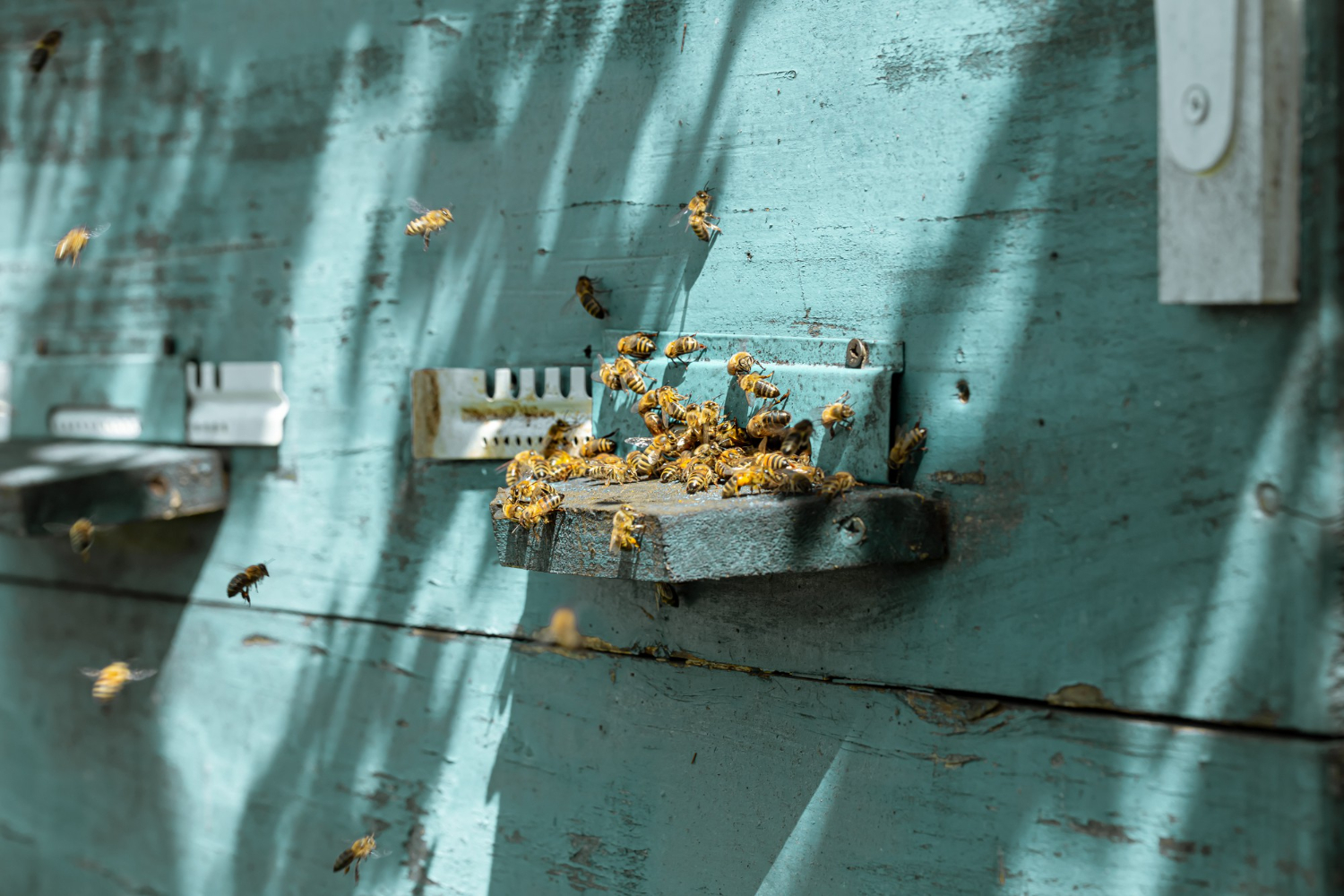All About Carpenter Bees
Carpenter bees, often mistaken for their more aggressive and social honeybee and bumblebee counterparts, are a unique and fascinating species with their own distinct characteristics and ecological role. In this comprehensive guide, we’ll delve into the world of carpenter bees, exploring the differences that set them apart from regular bees, their vital role in nature, how to address infestations without doing harm, and strategies for preventing further nesting and structural damage. Carpenter bees can and will destroy or weaken wooden structures, but that doesn’t make them our enemy.
Differences from Regular Bees
Carpenter bees (genus Xylocopa) are solitary bees, in stark contrast to honeybees and bumblebees, which live in colonies. Unlike their social counterparts, carpenter bees do not create hives or nests with large populations. Instead, they tunnel into wood to create individual nesting chambers, making them solitary but industrious pollinators. These bees are typically larger in size, with a shiny, hairless abdomen, often black or metallic blue. They are also known for their distinctive hovering flight patterns near the entrances of their nest sites.
Their Role in Nature & Where They Can Be Found
Carpenter bees play a crucial role in pollination, and they are excellent at it. They are known to pollinate a wide variety of flowering plants, including fruit trees, vegetables, and ornamental plants. These bees are essential for the reproduction of many plant species, making them vital contributors to ecosystem health. Carpenter bees are found throughout North America, with various species adapted to different regions. They often inhabit gardens, forests, and meadows, seeking out wood to nest in, such as tree branches, logs, or, unfortunately for homeowners, structural wood in buildings. Log homes are especially vulnerable. Companies that build log cabins and homes like Frontier Log Homes sell their homes with warnings about the dangers of ignoring carpenter bees when it comes to the home.
How to Deal with Infestations Without Harming Them
It’s important to approach carpenter bee infestations with care, especially given their important role as pollinators. When dealing with a carpenter bee problem, consider the following steps:
- Identification: Confirm that the infestation is indeed carpenter bees and not other wood-boring insects like termites. Look for perfectly round holes in wood surfaces, which are a distinctive sign of carpenter bee activity.
- Observation: Observe their nesting patterns and entrances to ensure you accurately locate their nests.
- Preventive Measures: While carpenter bees are generally not aggressive, you may want to wear protective clothing when working around their nests. This will help prevent accidental stings, though they are unlikely to sting unless provoked.
- Plug Holes: Once you’ve identified their nest entrances, wait until nightfall when the bees are less active. Then, gently plug the holes with wood putty or caulk. This will prevent further nesting while allowing existing bees to exit.
- Wood Treatment: To deter carpenter bees from returning, treat the infested wood with paint or a wood preservative. Be sure to do this during the late summer or fall when the bees are less likely to be nesting.
How to Prevent Further Nests and Damage to a Structure
Preventing future carpenter bee infestations is crucial for the integrity of wooden structures. Here are some effective preventive measures:
- Seal and Paint: Regularly inspect your home’s exterior for holes or cracks in wooden surfaces. Seal these openings with caulk and paint all exposed wood. Carpenter bees are less likely to nest in painted or treated wood.
- Pressure-Treated Wood: When constructing or repairing wooden structures, consider using pressure-treated lumber, which is less attractive to carpenter bees due to its chemical treatment.
- Hang Fake Nests: Some homeowners have found success by hanging fake wasp or hornet nests near vulnerable areas. Carpenter bees are territorial and may avoid nesting near what they perceive as potential threats.
- Regular Maintenance: Keep up with regular maintenance and inspections of wooden structures, especially during the spring and early summer when carpenter bees are most active.
Bringing this all to a head, understanding carpenter bees, their characteristics, and their important role in nature is essential for effective management and conservation efforts. When addressing infestations, taking care not to harm these valuable pollinators while safeguarding your property is a responsible and environmentally conscious approach. By implementing preventive measures, you can reduce the risk of future carpenter bee nests and protect your wooden structures for years to come.

